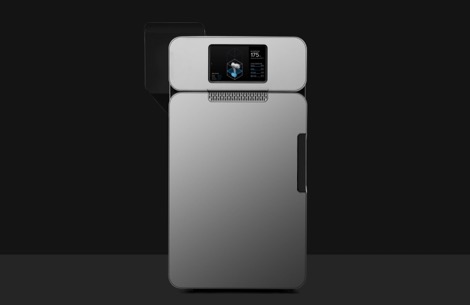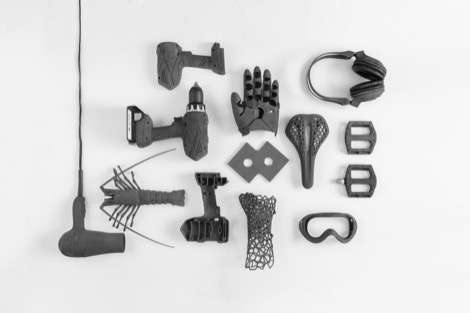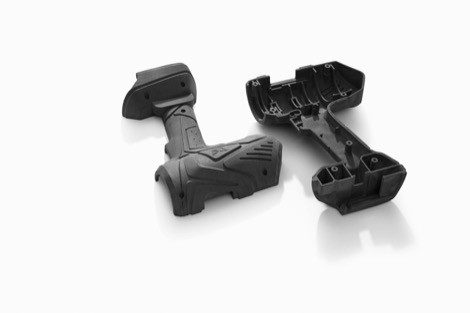
Formlabs has announced its latest 3D printer, a desktop-sized SLS machine, priced at €9,999, that looks to bring the benefits of stronger parts built using sintering technology, typically reserved for the more industrial end of the additive manufacturing spectrum, to the desktop.
Formlabs, which has built its reputation on bringing SLA to a wider, more cost conscious market, unveiled the Fuse 1 at the company’s Digital Factory event in its home town of Boston.
Offering a build volume of 165 x 165 x 320 mm, the Fuse 1 launches with Nylon PA 12 and PA 11 materials, both of which have been the long standing benchmark materials for sintering from the likes of 3D Systems, EOS and many others.

“When we launched the world’s first desktop stereolithography 3D printer in 2012, Formlabs created new possibilities for designers and engineers to create physical products by giving them access to professional 3D printing technology that had hitherto been unavailable,” said Formlabs CEO Max Lobovsky at the launch.
“With Fuse 1, we have taken the same approach to making powerful SLS technology available to a huge range of customers.”

The sintering market has been on the cusp of doing something to reduce costs for a couple of years now. Most of the key patents expired a few years ago and there have been a number of start-ups promising to bring the technology to a wider audience with lower cost machines – whether that’s Sinterit (), Sintratec or Blue Printer (which now appears to have been acquired into a large IT company).

Formlabs’ machine isn’t going to the cheapest on the market, but that didn’t stop it achieving success with the Form 1 and Form 2 SLA machines.
Judging by the company’s track record, there’s a mix of smart design, cost reduction and quick ramp up to scale production at play here that could see it succeed where many others haven’t gained traction.
There’s also the fact that it has probably now sold more SLA machines that anyone else so has a pretty rich set of contacts in some of the most advanced engineering and design companies in the world.
What’ll make of break the success of the Fuse 1 will be not just be the build machine itself, but also how it handles all of the ancillary equipment that typically goes alongside the core machine. Whether that’s break-out of the powder cake, material reuse and recycling and general post processing.
Even at this early stage, the company is offering a complete package that includes a post-processing station with material recovery, an extra build piston for continuous usage, and initial material load.
There’s no word of what sort of facilities requirements will need to be in place for this machine to operation in the design office or workshop, but that’ll come with time.
Extraction and ventilation will be more rigorous than with SLA so we’re not expecting the Fuse 1 to appear on desktops at scale anytime soon, but with the company’s track record, things look good.
The Additive Manufacturing machine industry seems to have switched its focus from plastics to metals. To my mind, that’s an error. Plastics-based laser sintering has been long overdue for some rationalisation and revolution.
The older guard, traditional players, such as EOS and 3D Systems, have been building their machines for decades now and have had the market to themselves.
With the expiration of key patents, there’s the potential to open up the field and bring these types of machines (which are heavily used in not only prototype/test, but also direct manufacture) to a much wider audience.
To achieve that, you need an organisation that can deliver a solid, reliable machine, that can produce parts we’ve come to expect. With its experience of doing much the same to the stereolithography market, Formlabs looks like it’s got some serious business ahead of it.
If I had a prediction, it would be that we’ll see some rapid material releases following on swiftly behind its ‘mid 2018’ launch.
The company has been testing units with a number of customers, with the company currently giving details of two. It appears that Formlabs has been working with New Balance to make ‘high-performance footwear’.
It has also been in use at Google ATAP Skunkworks, with David Beardsley manager of Google ATAP Skunkworks commenting: “SLS technology enables designers and engineers to accelerate their prototyping process by combining realistic material properties with the minimization of 3D printing design constraints.
With the Fuse 1, a combination of high precision parts, reduced cycle time and robust materials allow teams to easily iterate throughout the design process and accelerate from whiteboard to final parts.”






